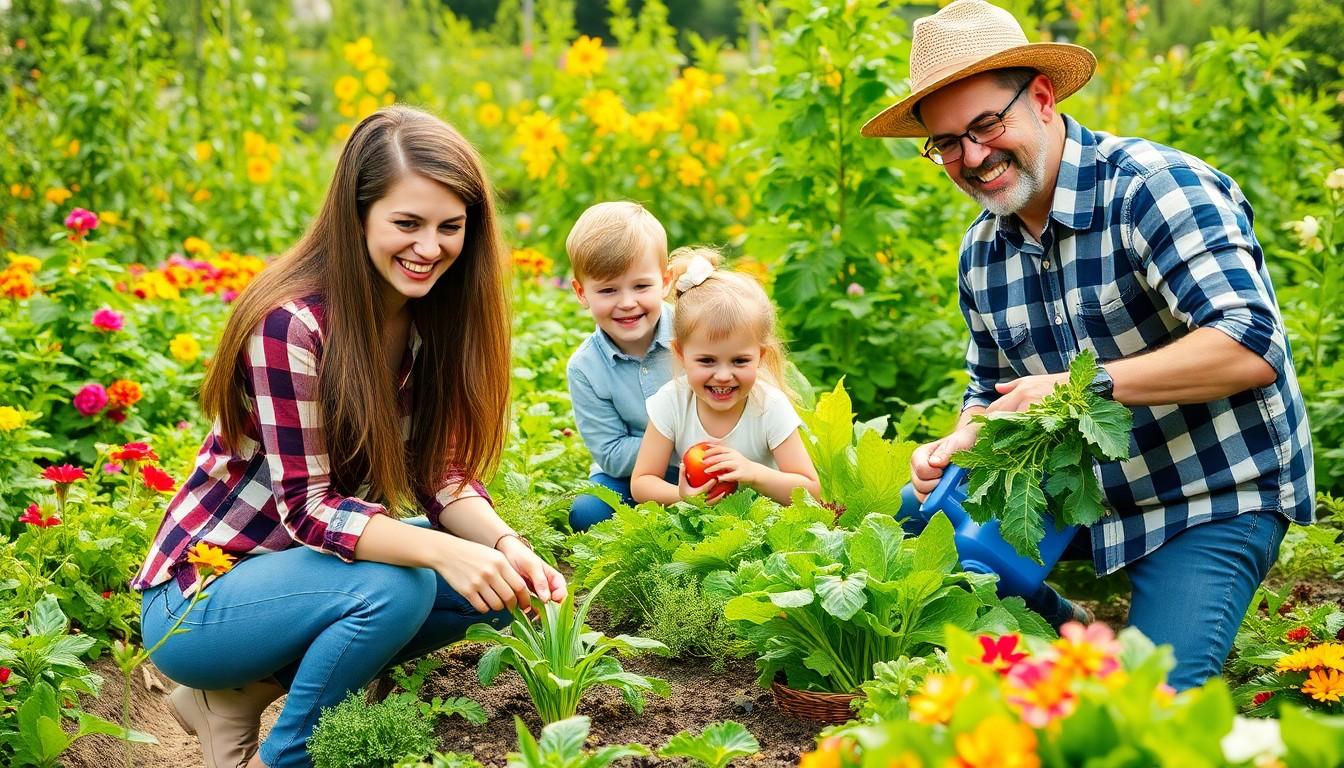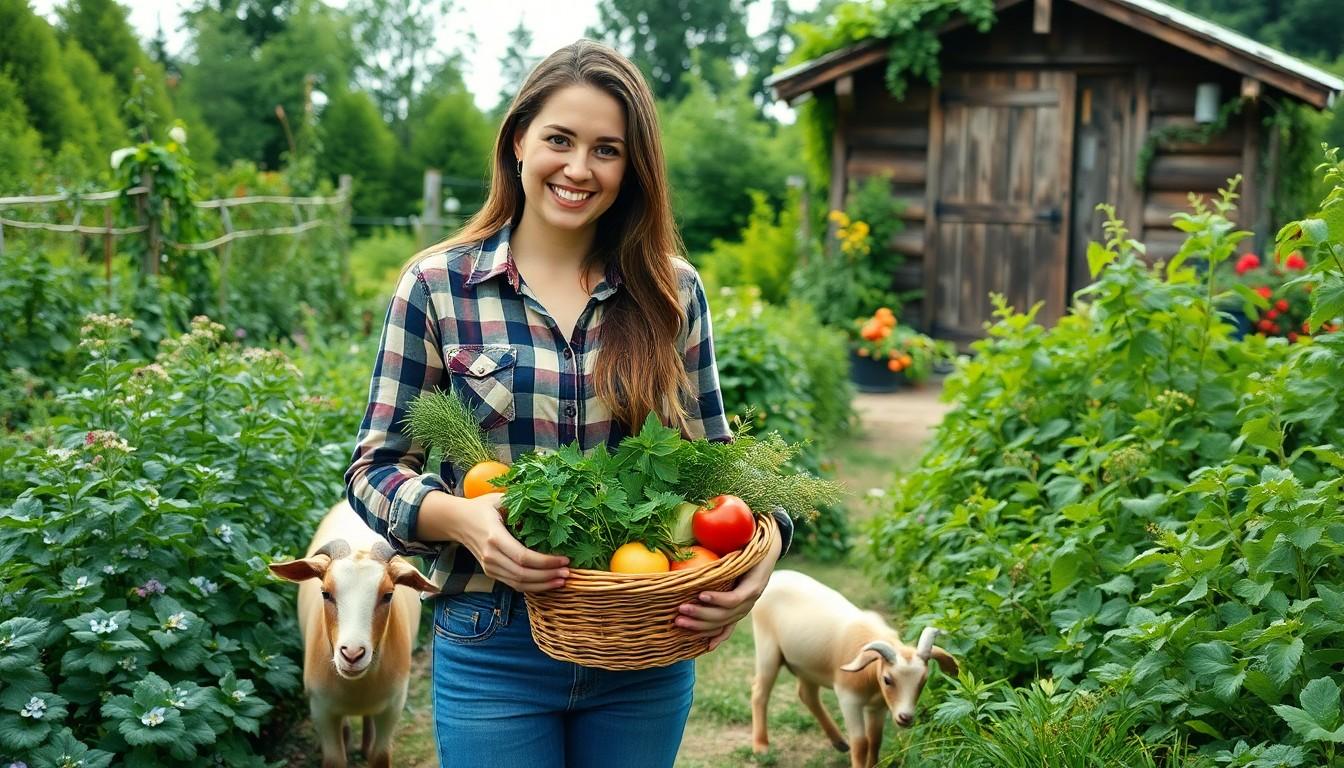In a world where convenience often reigns supreme, the homesteading family embraces a delightful rebellion against the ordinary. Picture this: a crew of adventurous souls trading grocery store aisles for homegrown veggies and DIY projects. They’re not just raising chickens; they’re raising the bar on sustainable living.
With a dash of humor and a sprinkle of grit, these families find joy in the simple pleasures of life. From mastering the art of canning to crafting their own soap, they turn everyday tasks into rewarding adventures. Who knew that growing your own food could lead to such delicious meals and hilarious mishaps? Join the journey of the homesteading family, where every day is an opportunity to learn, laugh, and maybe even chase a runaway goat or two.
Homesteading Families
Homesteading families embrace a self-sufficient lifestyle. They cultivate their own gardens, raising fresh vegetables and herbs. Additionally, many of these families raise chickens for eggs and sometimes goats for milk. The commitment to sustainable living drives them to minimize reliance on supermarkets.
Learning DIY skills is essential for these families. They often engage in activities like canning, preserving fruits and vegetables for winter months. Making soap or candles also allows them to create household essentials with natural ingredients. These skills foster creativity and resourcefulness, enriching their daily lives.
Community plays a significant role among homesteaders. Many participate in local farmer’s markets, sharing homegrown produce and homemade goods. Connections with neighbors thrive as families exchange advice, seeds, and even livestock. Workshops often gather like-minded individuals, encouraging knowledge sharing and learning.
Challenges arise frequently in this lifestyle. Weather can affect crop production significantly, leading to limited harvests. Pests and diseases can threaten gardens, making vigilance necessary. However, these experiences often bring families closer together, as they tackle obstacles collaboratively.
Ultimately, the joy of homesteading lies in simple pleasures. Families find satisfaction in watching vegetables grow and nurturing animals. Daily routines, though demanding, foster a deep connection with the land and each other. Through this journey, homesteading families create lasting memories while embracing the adventure of sustainable living.
Benefits of Homesteading

Homesteading offers numerous benefits, enhancing family life and fostering sustainable practices. One major advantage lies in self-sufficiency.
Self-Sufficiency
Self-sufficiency enables families to grow their own food and become less reliant on external sources. Families cultivate gardens filled with vegetables and herbs, providing healthy options year-round. Raising chickens for fresh eggs or goats for milk further supports this independence. Skills learned through DIY projects like canning equip families to preserve food for winter, extending their harvest. Additionally, these practices lead to cost savings over time, as families spend less on grocery bills. Engaging in self-sufficient living also instills a sense of accomplishment and resilience.
Connection to Nature
Connection to nature serves as a fundamental aspect of homesteading. Families often spend daily hours outdoors, tending to gardens and caring for animals. This routine nurtures appreciation for the environment and encourages sustainable practices. Observing seasonal changes fosters a deeper understanding of the ecological system. Natural cycles, such as planting and harvesting, help families cultivate patience and mindfulness. Such experiences contribute to overall well-being, promoting happier and healthier family dynamics. Ultimately, nurturing relationships with the land leads to lasting memories and a fulfilling lifestyle.
Challenges Faced by Homesteading Families
Homesteading families encounter various challenges that test their resilience and resourcefulness. These hurdles can impact their pursuit of a self-sufficient lifestyle.
Financial Considerations
Costs associated with homesteading can accumulate. Expenses for seeds, tools, and livestock can strain a budget. Families must evaluate ongoing costs like feed, maintenance, and utilities. Creating a financial plan helps mitigate unexpected expenses. Investing in quality tools and materials pays off in the long run, ensuring durability and efficiency. Even though initial investments may seem daunting, they often lead to significant savings through reduced grocery bills. Homesteading also provides opportunities for income generation, such as selling surplus produce or handmade goods.
Time Commitment
Time investment for homesteading demands careful management. Daily tasks like planting, harvesting, and animal care consume many hours. Families might need to sacrifice leisure activities to fulfill responsibilities. Scheduling effectively can help balance homesteading activities with family time. Seasonal tasks add to the workload, especially during planting or harvest periods. Working together fosters stronger family bonds while ensuring all tasks get completed. Although the time commitment can feel overwhelming, the rewards of homegrown food and self-sufficiency make it worthwhile.
Essential Skills for Homesteading
Homesteading families develop various essential skills that enhance their self-sufficiency and connection to nature. Mastering these skills leads to a fulfilling, sustainable lifestyle.
Gardening and Farming
Gardening offers a direct relationship with food. Families plant a wide array of vegetables, herbs, and fruits to ensure year-round harvests. Crop rotation, soil amendments, and companion planting significantly improve yields. Managing pests through natural remedies reduces reliance on chemicals, promoting a healthier environment. Additionally, raising animals like chickens and goats provides fresh eggs and milk, expanding dietary options. Seasonal planning ensures families remain efficient, maximizing productivity while working within nature’s cycles.
Food Preservation
Food preservation skills are crucial for extending the harvest. Canning methods, including water bath and pressure canning, allow families to store seasonal produce for winter months. Dehydration serves as another effective technique, reducing waste while retaining nutrients. Families often ferment vegetables, which not only enhances flavor but also supports gut health. Freezing fruits and vegetables preserves their taste and texture, ensuring delicious meals year-round. Collectively, these methods enable families to enjoy their labor long after the growing season ends.
Building a Homesteading Community
Building a strong homesteading community enhances the experience for families. Many families connect through local farmer’s markets where they share fresh produce. Participating in these markets fosters relationships with like-minded individuals. Educational workshops emerge as valuable gatherings, offering skills in canning, gardening, and livestock care.
Families often exchange seeds and livestock, strengthening ties within the community. Collaborating on projects such as barn building or garden planning can increase local knowledge. Sharing tools and resources alleviates some financial burdens associated with homesteading.
Neighbors sometimes create support networks for handling challenges like pest control or crop failures. These networks allow families to share successes and setbacks openly. They hold regular meetings to discuss best practices and seasonal preparations.
Social media platforms play a vital role in connecting homesteading families. Local groups allow for information exchange and organization of events. Families can share tips on natural pest management or preservation techniques. Engaging with broader homesteading communities online leads to discovering innovative practices.
Community events such as harvest festivals highlight the fruits of collective labor. These gatherings celebrate successful harvests while fostering camaraderie among families. Everyone enjoys showcasing their homemade goods like jams, pickles, or baked items.
Support from the community also extends to emotional well-being. Families rally together during tough times, offering help and encouragement. This mutual support creates a sense of belonging that enhances the homesteading journey.
Ultimately, building a homesteading community nurtures relationships and resilience, making the lifestyle richer and more fulfilling. Prioritizing connections with neighbors leads to shared resources and collective knowledge, fostering a sustainable and enjoyable homesteading experience.
Homesteading Families Celebrates Simplicity And Resilience
Homesteading families embody a lifestyle rooted in sustainability and self-reliance. They embrace the challenges and rewards of nurturing their own food and skills while fostering a deep connection to nature and each other. The journey is filled with laughter and learning as they navigate the ups and downs of rural living.
Building a supportive community further enriches their experience, providing valuable resources and shared knowledge. Through collaboration and camaraderie, these families not only thrive but also create lasting memories. Embracing homesteading is more than a choice; it’s a commitment to a fulfilling and adventurous way of life that celebrates simplicity and resilience.

